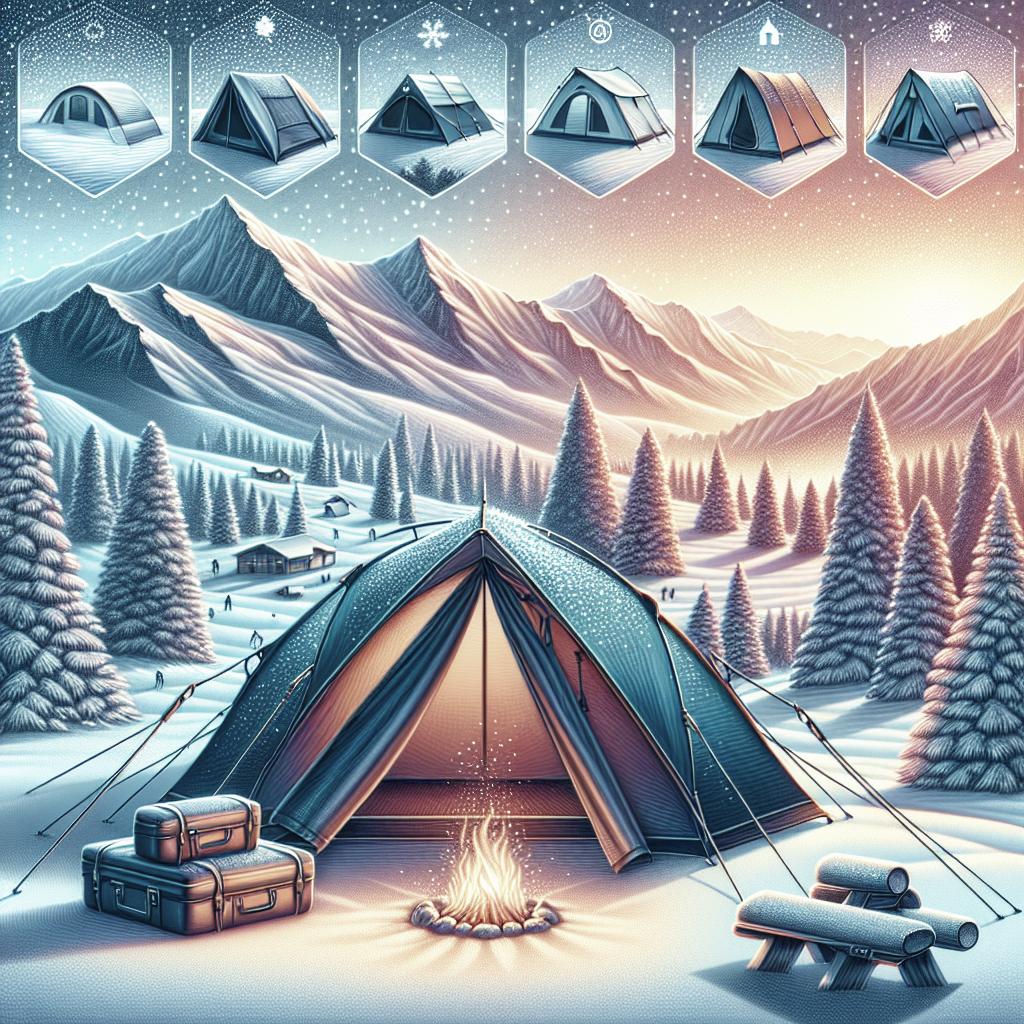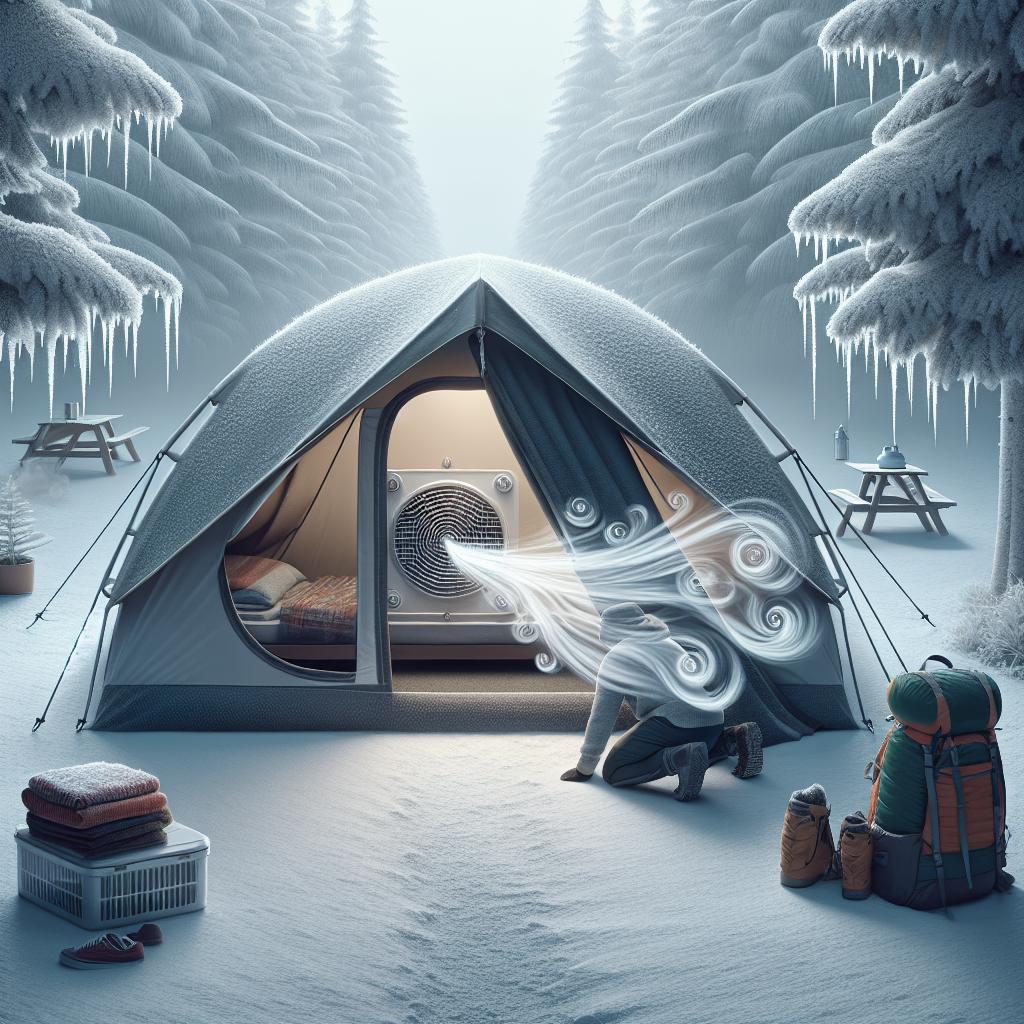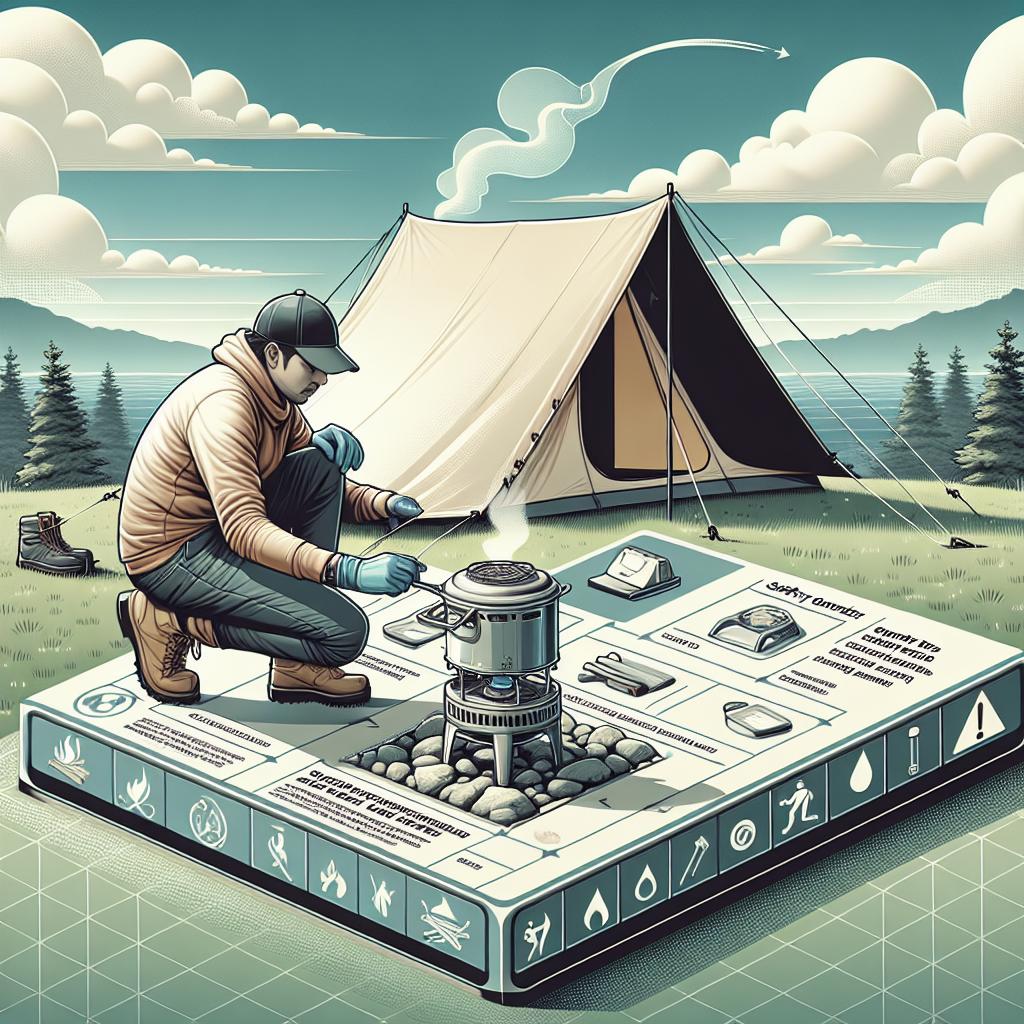<>
Introduction Winter camping, particularly snow camping, offers a unique blend of tranquility and adventure. The serene, snowy landscapes and crisp, fresh air provide a stark contrast to typical camping experiences, making it an unforgettable endeavor for outdoor enthusiasts. However, such an expedition requires thorough preparation and the right gear to ensure safety and comfort. From understanding weather patterns to choosing the right tent and other essential equipment, this guide aims to provide a comprehensive overview of what you need to know before embarking on a winter camping trip in freezing conditions. You’ll find expert tips, personal anecdotes, and critical FAQ sections to ensure you’re well-prepared for your snowy adventure.What you need to know before Winter Camping
Check the weather forecast
One of the most important steps before any winter camping trip is to check the weather forecast. Winter weather can be unpredictable and change rapidly. Look for conditions like heavy snowfall, high winds, and severe cold, which could significantly impact your trip. It’s crucial to keep an eye on weather updates from reliable sources right up to the point of departure to make informed decisions about your trip plans and gear requirements. Understanding the forecast helps in planning for the worst-case scenarios, such as an unexpected snowstorm or sub-zero temperatures. Additionally, knowing the expected weather allows you to pack appropriate layers of clothing and gear to manage the cold effectively. Always remember, it’s better to be over-prepared than underprepared when it comes to winter camping.
Make sure you want to do this
Winter camping is not for everyone, and understanding whether you truly want to embark on this adventure is critical. The experience can be challenging and requires mental and physical resilience. Are you comfortable with the cold? Can you manage the isolation and potential hazards that come with winter environments? Evaluate your tolerance and preparedness for these factors before committing. It may be helpful to start with shorter trips or to accompany experienced winter campers on initial forays to get a real sense of what to expect. This way, you can ease into the experiences and build confidence and skills incrementally. Remember, pushing yourself beyond your comfort zone can be rewarding, but it should be done safely and gradually.
Do you have a satellite phone to call for help?
Safety should always be your top priority in any outdoor adventure, and winter camping is no exception. Having a reliable means of communication is vital in case anything goes wrong. A satellite phone provides a lifeline when you’re in remote areas without reliable cell service. This device ensures you can call for help, get weather updates, and stay in touch with emergency services if needed. Besides a satellite phone, consider carrying personal locator beacons and two-way radios. These can also aid in communication and tracking, ensuring that you have multiple layers of safety. Familiarize yourself with how these devices work and always keep them handy. Being prepared for emergency situations can make the difference between an enjoyable adventure and a dangerous ordeal.
Picking Your Winter Camping Gear
Choosing a Winter Camping Tent
Selecting the right tent for winter camping is crucial. Winter tents are designed to withstand harsh weather conditions, including strong winds and heavy snowfall. Look for a four-season tent, which typically features stronger poles, more durable materials, and a design that can handle the weight of snow. The tent should also have a robust ventilation system to prevent condensation buildup inside. The size of the tent is another critical consideration. Ensure it has enough space to accommodate you and your gear comfortably. Depending on the number of campers, a larger tent might be more beneficial to store equipment and provide space to move around. However, remember that larger tents can be heavier and more cumbersome to carry, so find a balance that suits your needs.
Freestanding or Semi Freestanding Tent
When choosing between a freestanding and a semi-freestanding tent, consider the ease of setup and stability in snowy conditions. Freestanding tents are popular because of their easy assembly and the ability to pitch them on any terrain. They are held up by their own pole structure, which makes them stable and allows you to move them around without disassembling. On the other hand, semi-freestanding tents may require guy lines and stakes to be fully stable, which can be more challenging in frozen ground. However, they tend to be lighter and can offer better ventilation. Ultimately, the choice depends on your preference for convenience versus weight and your comfort level with setting up in various winter terrains.
Choosing a Warm Sleeping Bag
A high-quality sleeping bag is your best defense against hypothermia. Look for a sleeping bag rated at least 10 degrees lower than the lowest expected temperature on your trip. Goose down and synthetic are the two primary insulation materials; goose down is warmer and more compressible but loses insulation when wet, while synthetic bags retain warmth better when damp. Mummy-shaped sleeping bags are ideal for winter camping as they offer better heat retention and reduce the amount of space your body needs to warm up. Additionally, consider sleeping bags with hoods and draft collars to minimize heat loss from your head and neck.
Choosing an Insulated Sleeping Pad
An insulated sleeping pad elevates you from the cold, hard ground and provides much-needed insulation. Look for pads with a high R-value, which indicates better thermal resistance and insulation properties. Foam pads are reliable and can be layered for extra warmth, while inflatable pads provide more comfort but may be vulnerable to punctures. In winter camping, a combination of both foam and inflatable pads is often suggested. The foam pad acts as a barrier against the cold ground, while the inflatable pad provides cushioning and additional insulation. This dual-layer system ensures that you stay comfortable and warm throughout the night.
What Clothes to Wear for Winter Camping
Layering is the key to staying warm in winter camping. Start with a moisture-wicking base layer to keep sweat away from your skin. Follow this with an insulating layer, such as fleece or down, to retain body heat. Finally, add a waterproof and windproof outer layer to shield against snow and wind. Don’t forget about accessories: wool or synthetic hats, gloves, and socks are essential. Layered gloves or mittens provide flexibility and additional warmth. For your feet, consider wearing two layers of socks: a thin, moisture-wicking pair under a thicker, insulating pair. Having multiple layers allows you to adjust your insulation depending on your activity level and weather conditions.
What other gear do I need for winter camping?
Besides the primary items mentioned, there are several other pieces of gear essential for winter camping. A reliable stove and fuel designed for cold conditions are crucial for cooking meals and melting snow for water. Pack enough food, including high-energy and easily digestible snacks, to keep your energy levels up. Snowshoes or crampons can make traversing snowy terrain easier, and a sturdy snow shovel is useful for digging out tent platforms or emergency shelters. Remember to pack waterproof bags to keep your gear dry and a good first aid kit tailored for cold injuries. Headlamps with extra batteries are essential for navigating the long winter nights.
Random Tips for Winter Camping That You’ll Love
Staying hydrated is as important in winter as in summer. Cold weather can suppress thirst, but your body still needs fluids to function properly, especially in high altitudes. Melt snow or use a water filter for a fresh supply. Keep water bottles inside your sleeping bag to prevent them from freezing overnight. Additionally, organizing your gear and setting up a routine can make your camping experience smoother. Keep a dedicated space for cooking and a separate area for gear maintenance. Create a packing list specific for winter conditions to ensure you don’t forget essential items. Finally, practice setting up your tent and using your stove in cold conditions before you go, so you’re familiar with them.
My Experience Winter Tent Camping
Having dabbled in various outdoor adventures, my first winter tent camping experience was both thrilling and challenging. The serene beauty of snow-covered landscapes was a stark contrast to the challenges posed by sub-zero temperatures. Setting up the tent in deep snow was particularly cumbersome, and I quickly learned the importance of having a snow shovel and sturdy tent stakes. One lesson I hold dear is the significance of staying dry. During a sudden shift in weather, my clothes got damp, making the cold even more biting. Drying wet gear inside the tent was a hassle but absolutely necessary for the following day. Each trip taught me new tips and tricks, from preventing condensation in the tent to efficiently packing and repacking gear. These experiences collectively built my confidence and improved my skills, making each winter camping trip more enjoyable and fulfilling.
FAQ: Snow Camping
How cold is too cold for tent camping?
Winter tent camping can be safely enjoyed up to a certain point. Temperatures below -20°F (-29°C) can be extremely dangerous unless you have specialized gear and significant experience. For most campers, staying within a range of 0°F to 20°F (-18°C to -7°C) with proper gear is a reasonable threshold.
Can you set up a tent in the winter?
Yes, you can set up a tent in the winter, but it requires additional skills and tools. Pre-pack snow stakes or make deadman anchors from buried logs or rocks to stabilize your tent. Shoveling snow to create a flat and solid base for the tent also helps in setting up a more stable campsite.
How do you camp in 0-degree weather?
Camping in 0-degree weather requires proper insulation and weather-appropriate gear. Use a four-season tent, a sleeping bag rated for extreme cold, and an insulated sleeping pad. Layer clothing to trap heat, and keep an eye on any exposed skin to prevent frostbite. Maintain body warmth by staying active and consuming warm, calorie-dense foods.
Should you put a tarp under a tent?
Yes, placing a tarp under your tent can provide an additional layer of insulation and protect against moisture. In snowy environments, ensure the tarp does not extend beyond the edges of the tent to prevent water pooling underneath.
Is it safe to use a heater in a tent?
Using a heater in a tent can be safe if done cautiously. Always use heaters designed for indoor or tent use and ensure proper ventilation to prevent carbon monoxide buildup. Battery-powered or catalytic heaters are recommended over open flame heaters. Keep the heater on a stable, flat surface away from flammable materials.
Final Thoughts on Winter Camping
Winter camping offers a unique and serene way to connect with nature, away from the usual hustle and bustle. By carefully selecting your gear and taking the necessary precautions, it becomes an accessible adventure. Below is a comprehensive summary to keep in mind as you prepare for your snowy escapade. “`
| Aspect | Key Points |
|---|---|
| Weather Preparation | Check forecasts, understand weather impacts, prepare for emergencies |
| Essential Gear | Four-season tent, warm sleeping bag, insulated sleeping pad, layered clothing, stove, snow shovel |
| Safety Measures | Satellite phone, first aid kit, reliable communication devices |
| Additional Tips | Stay hydrated, organize gear, keep water bottles from freezing |
| Common Questions | Cold thresholds, winter tent setup, extreme-weather camping, using a tarp, heater safety |
“` By following these guidelines and being thoroughly prepared, you can safely enjoy the pristine beauty and exhilarating challenges of winter camping.


